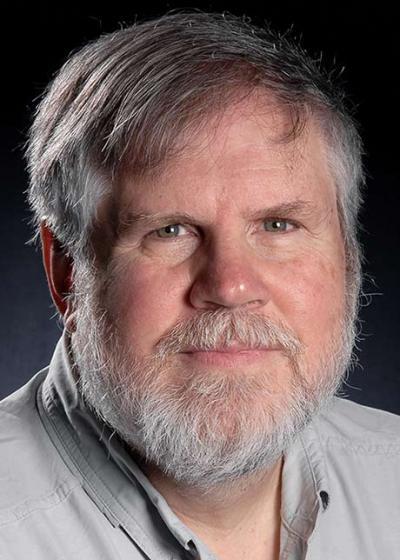

President Vladimir Putin on Wednesday signed an "internet sovereignty" bill into law that further expands government's control of the Internet. more
 The media is filled with hyperbolic claims that "Our network is the fastest!" And there are many so-called "Speed Test" tools available on the Internet. Most are easily run in a web browser. Should you trust those tools? Not really. The popular speed testing tools provide a very narrow and limited measure of network "speed." It is quite possible that a network that is rated as "fast" could actually deliver poor results to many applications. Why is this so? more
The media is filled with hyperbolic claims that "Our network is the fastest!" And there are many so-called "Speed Test" tools available on the Internet. Most are easily run in a web browser. Should you trust those tools? Not really. The popular speed testing tools provide a very narrow and limited measure of network "speed." It is quite possible that a network that is rated as "fast" could actually deliver poor results to many applications. Why is this so? more
 I posted reviews of important LEO-satellite Internet service developments during 2017, 2018 and 2019. I've updated those posts during the years and have 18 new posts for 2020. In 2020 we saw increased effort from China, OneWeb's bankruptcy and restructuring with new ownership and prospects, Amazon investng in space-related infrastructure, Telesat making steady progress, SpaceX making rapid progress and satellite and debris tracking and collision-avoidsnce service startups. The following are brief summaries of and links to the 2020 posts. more
I posted reviews of important LEO-satellite Internet service developments during 2017, 2018 and 2019. I've updated those posts during the years and have 18 new posts for 2020. In 2020 we saw increased effort from China, OneWeb's bankruptcy and restructuring with new ownership and prospects, Amazon investng in space-related infrastructure, Telesat making steady progress, SpaceX making rapid progress and satellite and debris tracking and collision-avoidsnce service startups. The following are brief summaries of and links to the 2020 posts. more
 At 4:04 am on February 26 Mykhailo Fedorov, Vice Prime Minister and Minister of Digital Transformation of Ukraine, requested Starlink service from Elon Musk, and at 2:45 pm on the 26th, Elon Musk tweeted "Starlink service is now active in Ukraine. More terminals en route." On February 28 at 12:29 pm, Fedorov posted a photo of a truckload of terminals. (Kyiv is 10 hours ahead of California) and an engineer, Oleg Kutkov, posted the first tweet from Ukraine. more
At 4:04 am on February 26 Mykhailo Fedorov, Vice Prime Minister and Minister of Digital Transformation of Ukraine, requested Starlink service from Elon Musk, and at 2:45 pm on the 26th, Elon Musk tweeted "Starlink service is now active in Ukraine. More terminals en route." On February 28 at 12:29 pm, Fedorov posted a photo of a truckload of terminals. (Kyiv is 10 hours ahead of California) and an engineer, Oleg Kutkov, posted the first tweet from Ukraine. more
 Earlier this year, at the CES show in January, the big cable companies discussed their vision for the future. They introduced the concept that cable networks would be able to deliver 10-gigabit broadband in the future. They labeled the promotion at the show as 10G. I didn't write about it at the time because I assumed this was a gimmick to give some buzz to this show in the middle of the pandemic. But lately, I've seen that they are still talking about the 10G initiative. more
Earlier this year, at the CES show in January, the big cable companies discussed their vision for the future. They introduced the concept that cable networks would be able to deliver 10-gigabit broadband in the future. They labeled the promotion at the show as 10G. I didn't write about it at the time because I assumed this was a gimmick to give some buzz to this show in the middle of the pandemic. But lately, I've seen that they are still talking about the 10G initiative. more
I believe Mobile Information and Communications Technologies (ICTs) are and very well remain powerful and best-suited technologies that will help provide connectivity and digital access in a much faster and cheaper way for developing countries of the globe. Thus, they are to be leveraged within their most strategic and profitable functional or usage contexts. Mobile access technologies along with relevant innovations have formed a powerful springboard for the Internet to be significantly accelerated in terms of access, usage and penetration. more
 Virgin Media announced its intention of restricting BitTorrent traffic on its new 50Mbps service according to an article by Chris Williams in The Register. Does this mean that net neutrality is endangered in the UK? The question is important because advocates of an open Internet like me hold the UK up as a positive example of net neutrality achieved through competition rather than through regulation. more
Virgin Media announced its intention of restricting BitTorrent traffic on its new 50Mbps service according to an article by Chris Williams in The Register. Does this mean that net neutrality is endangered in the UK? The question is important because advocates of an open Internet like me hold the UK up as a positive example of net neutrality achieved through competition rather than through regulation. more
 The US government is looking at telling ISPs how to deal with compromised customers and botnets. They're a bit late to the party, though. Most of the major commercial ISPs have been implementing significant botnet controls for many years now. more
The US government is looking at telling ISPs how to deal with compromised customers and botnets. They're a bit late to the party, though. Most of the major commercial ISPs have been implementing significant botnet controls for many years now. more
 The New Jersey Supreme Court has issued an important decision on Internet users' right to privacy. The case involves a dispute about whether an ISP violated a user's privacy rights by turning over subscriber information (name, address, billing details) associated with a particular IP address. It ends up that the subpoena served on the ISP was invalid for a variety of reasons. As the user had a 'reasonable expectation of privacy' in her Internet activities and identifying information, and because the subpoena served on the ISP was invalid, the New Jersey court determined that the ISP should not have turned over the personal data... more
The New Jersey Supreme Court has issued an important decision on Internet users' right to privacy. The case involves a dispute about whether an ISP violated a user's privacy rights by turning over subscriber information (name, address, billing details) associated with a particular IP address. It ends up that the subpoena served on the ISP was invalid for a variety of reasons. As the user had a 'reasonable expectation of privacy' in her Internet activities and identifying information, and because the subpoena served on the ISP was invalid, the New Jersey court determined that the ISP should not have turned over the personal data... more
 Images of clouds have been used when discussing networks for quite some time. When traditional telecoms companies were selling point-to-point circuits a drawing of a cloud was sometimes used. The cloud symbol helped indicate the provider?s domain of responsibility, effectively hid the internal complexity of the network and focused on the end user. This was all fine when the product offered was an end-to-end circuit. more
Images of clouds have been used when discussing networks for quite some time. When traditional telecoms companies were selling point-to-point circuits a drawing of a cloud was sometimes used. The cloud symbol helped indicate the provider?s domain of responsibility, effectively hid the internal complexity of the network and focused on the end user. This was all fine when the product offered was an end-to-end circuit. more
The end of the year is approaching which seems to be a harbinger of Internet disasters. Four years ago (on 24 Dec. 2004), TTNet significantly disrupted Internet traffic by leaking over 100,000 networks that were globally routed for about an hour. Two years ago (on 26 Dec. 2006), large earthquakes hit the Luzon Strait, south of Taiwan, severing several underwater cables and wreaking havoc on communications in the region. Last year there was a small delay. On 30 Jan. 2008, more underwater cables were severed in the Mediterranean, severely disrupting communications in the Middle East, Africa, and the Indian subcontinent. Calamity returned to its customary end-of-year schedule this year, when early today (19 Dec. 2008) several communications cables were severed, affecting traffic in the Middle East and Indian subcontinent. more
 The success of the internet demonstrates that we now depend on network operators to assure that services like telephony work. The carriers are pushing back on neutrality because their business model is threatened by a level playing field. We should be encouraging innovative internet-native business models rather than working to preserve an industry threatened by innovation. more
The success of the internet demonstrates that we now depend on network operators to assure that services like telephony work. The carriers are pushing back on neutrality because their business model is threatened by a level playing field. We should be encouraging innovative internet-native business models rather than working to preserve an industry threatened by innovation. more
Chinese citizens will be required to let telecommunications carriers to scan their faces in order to sign up for internet access or to get a new phone number. more
 What do Europeans interested in Internet policy think about cybersecurity, network neutrality, IANA, improving Internet access and other topics? Tomorrow the second day of the European Dialog on Internet Governance (EuroDIG) 2015 in Sofia, Bulgaria, will cover all those topics and many more. I've listed some of the sessions that either I or my Internet Society colleagues are participating in. I will personally be involved as a panelist on the two sessions about cybersecurity. more
What do Europeans interested in Internet policy think about cybersecurity, network neutrality, IANA, improving Internet access and other topics? Tomorrow the second day of the European Dialog on Internet Governance (EuroDIG) 2015 in Sofia, Bulgaria, will cover all those topics and many more. I've listed some of the sessions that either I or my Internet Society colleagues are participating in. I will personally be involved as a panelist on the two sessions about cybersecurity. more
 A friend who read my Creating Sustainable Network Neutrality paper wrote to say, "Help me understand what is so bad about treating different types of communications differently." That's a really good question! If you want to offer vertically integrated services on special purpose networks, such as video entertainment or pager service or telephony, I do not have a problem with that, provided you don't use your market power to impede Internet applications that offer competing services... more
A friend who read my Creating Sustainable Network Neutrality paper wrote to say, "Help me understand what is so bad about treating different types of communications differently." That's a really good question! If you want to offer vertically integrated services on special purpose networks, such as video entertainment or pager service or telephony, I do not have a problem with that, provided you don't use your market power to impede Internet applications that offer competing services... more